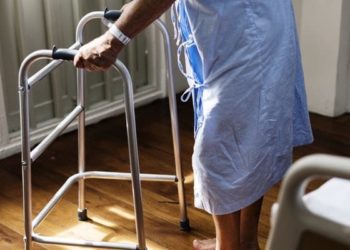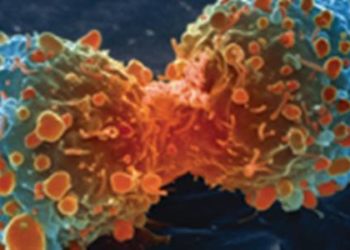2 Minute Medicine Rewind March 5, 2018
Balanced Crystalloids versus Saline in Noncritically Ill Adults
The administration of intravenous isotonic crystalloids is a common treatment in numerous medical settings. However, the comparative clinical effects of different crystalloids are unclear. The most frequently used crystalloid is saline (0.9% sodium chloride), followed by balanced crystalloids, such as lactated Ringer’s solution (LRS) and Plasma-Lyte A. Saline, in particular, is notable for its supraphysiologic chloride concentration, which result in hyperchloremic metabolic acidosis, and has been shown to be associated with kidney injury in recent studies. In this randomized controlled trial, 13,347 patients were cluster-randomized to receive either saline or balanced crystalloids to evaluate the comparative impact on hospital-free days to day 28 among admitted Vanderbilt emergency department patients. Lactated ringer’s solution represented 95% of the balanced crystalloids ultimately used in the trial. Over the 16-month trial period, researchers found that there was no significant difference in the number of hospital-free days between the two groups on the basis of multivariate analysis (median 25 days in each group; OR 0.98, 95% CI 0.92 to 1.04, p=0.41). However, patients in the balanced crystalloids group had a lower incidence of major adverse kidney events (composite of death, new renal-replacement therapy, or persistent renal dysfunction) within 30 days (4.7%) than those in the saline group (5.6%) (OR 0.82, 95% CI 0.70 to 0.95, p=0.01). Patients who benefitted most from balanced crystalloids in regards to major adverse kidney events, were those who presented to the emergency department with renal dysfunction or hyperchloremia. Overall, although balanced crystalloids did not result in fewer hospital-free days when compared to saline, there was a 0.9 percentage point decrease in the risk or major adverse kidney events, corresponding to a number needed to treat of 111. In light of the number of patients who receive saline or balanced crystalloids annually, this study has important implications of on a population level.
Hydrocortisone plus Fludrocortisone for Adults with Septic Shock
Septic shock is a clinical syndrome characterized by circulatory, cellular, and metabolic abnormalities resulting from a dysregulated host response to infection. Apart from early hemodynamic and respiratory support along with antibiotic therapy, there is no approved adjunct therapy for sepsis. Glucocorticoids have been used in patients with septic shock, however, previous studies have not provided compelling evidence to support their use. In this randomized controlled trial, 1241 patients with septic shock were assigned to either a combination of hydrocortisone and fludrocortisone or placebo for 7 days without tapering to determine whether hydrocortisone-plus-fludrocortisone leads to a decrease in 90-day all-cause mortality. Patients with a survival prognosis of less than 28 days due to pre-existing disease were excluded. Researchers found that there was a lower incidence of 90-day all-cause mortality in the hydrocortisone-plus-fludrocortisone group (43.0%) compared to the placebo group (49.1%) (RR 0.88, 95% CI 0.78 to 0.99, p=0.03). In addition, mortality was lower in the hydrocortisone-plus-fludrocortisone group than in the placebo group at the time of discharge from the intensive care unit (ICU) (35.4% vs. 41.0%, p=0.04), hospital discharge (39.0% vs. 45.3%, p=0.02), and day 180 (46.6% vs. 52.5%, p=0.04). Finally, patients in the hydrocortisone-plus-fludrocortisone group had significantly more vasopressor-free days to day 28 (17 days) than those in the placebo group (15 days) (p<0.001). There was no significant difference in serious adverse events between the two groups (p=0.08), although the incidence of hyperglycemia was significantly higher in the hydrocortisone plus fludrocortisone group (RR 1.07, 95% CI 1.03 to 1.12, p=0.002). Overall, this study suggests that 7-day treatment with hydrocortisone plus fludrocortisone in patients with septic shock results in improved clinical outcomes than placebo, although further trials are needed to assess long-term effects.
Adjunctive Glucocorticoid Therapy in Patients with Septic Shock
There is no approved pharmacologic treatment for sepsis, and reported death rates among hospitalized patients with septic shock range from 30% to 45%. Glucocorticoids have been used as an adjuvant therapy for septic shock for many years, however uncertainty remains regarding their efficacy and safety. In this randomized controlled trial, 3800 mechanically ventilated patients in septic shock were randomized to receive a continuous 24-hour infusion without tapering of either hydrocortisone or placebo for a maximum of 7 days, until discharge from the intensive care unit (ICU), or until death. The primary outcome was death from any cause at 90 days post-randomization. Patients with a survival prognosis of less than 90 days due to pre-existing disease were excluded. Researchers found that there was no significant difference in the primary outcome between the two groups, where 27.9% of hydrocortisone patients had died at 90 days, and 28.8% of placebo patients had died at 90 days (OR 0.95, 95% CI 0.82 to 1.10, p=0.50). The time to resolution of septic shock was shorter in the hydrocortisone group (median 3 days) than in the placebo group (median 4 days) (HR 1.32, 95% CI 1.23 to 1.41, p<0.001). In addition, significantly fewer patients in the hydrocortisone group received a blood transfusion (37.0%) compared to the placebo group (41.7%) (OR 0.82, 95% CI 0.72 to 0.94, p=0.004). Notably, however, there was a higher percentage of adverse events in the hydrocortisone group than in the placebo group (1.1% vs. 0.3%, p=0.009). Overall, this study indicates that while continuous infusion of hydrocortisone in patients with septic shock does not decrease mortality at 90 days, there may be role for hydrocortisone in achieving hemodynamic stability in septic shock, as hydrocortisone-treated patients required fewer blood transfusions than placebo-treated patients. Further studies are necessary in confirming this finding.
The prevention of cardiopulmonary arrest in pediatric patients is largely dependent on the timely identification and treatment of clinical deterioration. Recently, several studies have attempted to determine the impact of early warning systems for hospitalized pediatric patients on clinical outcomes, although consensus has not been reached due to study limitations. The Bedside Paediatric Early Warning System (BedsidePEWS) is a system of care composed of a documentation record for vital signs, a corresponding manually calculated severity of illness score, and recommendations for care escalation and de-escalation for pediatric hospitalized patients. In this multicentre cluster-randomized controlled trial, 144,539 pediatric inpatients at 21 hospitals were assigned to the BedsidePEWS intervention (10 hospitals) or usual care (11 hospitals) to study the effect of BedsidePEWS on all-cause hospital mortality. The intervention period was 52 weeks. Researchers found that there was no significant difference in all-cause hospital mortality between BedsidePEWs hospitals and usual care hospitals, with 1.93 deaths per 1000 discharges in BedsidePEWs hospitals, and 1.56 deaths per 1000 discharges in usual care hospitals (OR 1.01, 95% CI 0.61 to 1.69, p=0.96). However, there were fewer significant clinical deterioration events in BedsidePEWs hospitals (0.5 per 1000 patient-days) than in usual care hospitals (0.84 per 1000 patient days) based on multivariate analysis (difference -0.34, 95% CI -0.73 to 0.05 per 1000 patient-days; RR 0.77, 95% CI 0.61 to 0.97, p=0.03). This study may have been underpowered due to a lower-than-expected observed rate of all-cause mortality (1.69 deaths per 1000 hospital discharges); the assumed baseline all-cause hospital mortality was 5.1 deaths per 1000 discharges. Overall, the findings from this study do not support the use of BedsidePEWs to reduce mortality in hospitalized pediatric patients, but do indicate a role for the system in reduction of significant clinical deterioration events.
Hypertension is a leading cause of morbidity and mortality worldwide. However, despite widely available effective treatments, control of hypertension remains sub-optimal due to therapeutic inertia, poor adherence, and organizational failures. Studies investigating the impact of titration of antihypertensive medications using self-monitoring of blood pressure have yielded contradictory results. In addition, the role of telemonitoring in addition to self-monitoring is unclear. In this randomized controlled trial, 1182 patients with uncontrolled hypertension above 140/90 mm Hg were randomized to general practitioner (GP) titration of antihypertensives using self-monitoring alone, self-monitoring plus telemonitoring, or clinic readings. The researchers aimed to evaluate whether the use of self-monitoring or telemonitoring to guide medication titration results in lower systolic blood pressure at 12 months compared to the use of clinic readings and self-monitoring. Researchers found that, after 12 months, the mean systolic blood pressure was lower in both the self-monitoring group (137.0 mm Hg, SD 16.7 mm Hg) and the telemonitoring group (136.0 mm Hg, SD 16.1 mm Hg) than the clinic readings group (140.4 mm Hg, SD 16.5 mm Hg) based on multivariate analysis (self-monitoring difference -3.5 mm Hg, 95% CI -5.8 to -1.2, p=0.0029; telemonitoring difference -4.7 mm Hg, 95% CI -7.0 to -2.4, p<0.0001). There was no significant difference between the self-monitoring and the telemonitoring groups (difference -1.2 mm Hg, 95% CI -3.5 to 1.2, p=0.3219). Although the trial was not powered to detect cardiovascular outcomes, the reduction in systolic blood pressure at 12 months from the control for the two interventions would be expected to lower stroke risk by approximately 20%, and coronary heart disease risk by approximately 10%. Overall, this study supports the use of blood pressure self-monitoring or telemonitoring over clinical readings to guide antihypertensive medication titration by GPs.
Image: PD
©2017 2 Minute Medicine, Inc. All rights reserved. No works may be reproduced without expressed written consent from 2 Minute Medicine, Inc. Inquire about licensing here. No article should be construed as medical advice and is not intended as such by the authors or by 2 Minute Medicine, Inc.

![PFO closure equivalent to medical management in prevention of recurrent stroke [PC and RESPECT trials]](https://www.2minutemedicine.com/wp-content/uploads/2013/03/Echokardiogram_von_Atriumseptumdefekt_Ostium_secundum1-350x250.jpg)




